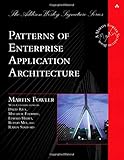https://www.amazon.com/Domain-Driven-Design-Tackling-Complex...
https://www.amazon.com/Clean-Code-Handbook-Software-Craftsma...
https://www.amazon.com/Clean-Architecture-Craftsmans-Softwar...
https://www.amazon.com/Patterns-Enterprise-Application-Archi...
https://www.amazon.com/Refactoring-Improving-Existing-Addiso...
https://www.amazon.com/Code-Complete-Practical-Handbook-Cons...
https://www.amazon.com/Pragmatic-Programmer-Journeyman-Maste...
https://www.amazon.com/Mythical-Man-Month-Software-Engineeri...
And just because it’s asked at every interview.
https://www.amazon.com/Design-Patterns-Object-Oriented-Addis...
I’m focused on AWS these days, but a lot of these principals are universal.
https://d1.awsstatic.com/whitepapers/architecture/AWS_Well-A...
NHibernate, SQLAlchemy, Hibernate are where you need to look and compare.
The ORM does a few joins where a performance gain is possible but we avoid them though as they are expensive on IO and transfer.
Most of our tables match the UI 1:1 and we populate these from the domain model when it is mutated or when we can afford it to be done (either directly or via message queues). Effectively they are materialized views which are updated when data changes or before it is required. Google CQRS.
I'm not suggesting NoSQL - just caution when using RDBMS features. I'm not an advocate of NoSQL.
[1] http://www.amazon.co.uk/Enterprise-Application-Architecture-...
I am trying to do the same thing as you, and I recently ordered this text based on a recommendation from a mentor.


https://martinfowler.com/articles/enterprisePatterns.html
More specifically this book: https://www.amazon.com/Patterns-Enterprise-Application-Archi...